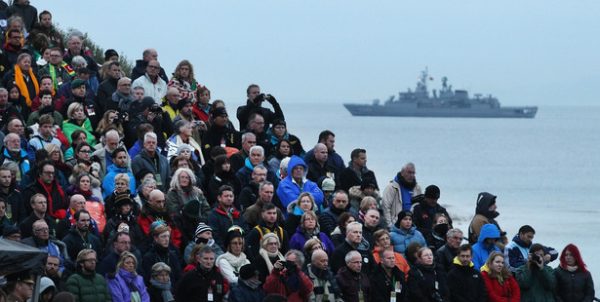New Zealand’s culture is much more diverse now than 10 years ago, and a strong Eastern influx is partly responsible for this changing face of New Zealand.
One in 15 people are of Asian ethnicity – more than double the 1991 figure, according to last year’s census. And, although nearly one in six of our 3.7 million-plus population is multilingual, one in 50 people do not speak English.
When the language question was first asked in the 1996 census, the response was similar, indicating a new wave of non-English speakers.
Not counting children under five years of age, the majority of immigrants who have not mastered New Zealand’s predominant tongue speak Samoan, Cantonese and Korean.
By far the fastest-growing ethnic group is from Korea – up from only 930 a decade ago to 19,026.
Auckland is the most cosmopolitan city. Two-thirds of Asian and Pacific Island settlers live there.
One in eight Asians lives in the Wellington region, which also has a strong Indian community.
Christchurch seems to be favoured by the Japanese.
A snapshot of the 2001 census shows that more people in New Zealand are now overseas-born, the population is getting older, and non-Christian religions are becoming more prevalent.
Ethnic diversity
There are more Asians than Pacific Island residents. After Koreans, the biggest group of immigrants is South African (14,889 compared with 2007 in 1991).
Russians are third (3084 from 480), then Arabs (2856 from 177), Croats (2502 from 171) and Iraqis (2145 from 246).
* The proportion who recorded their race as European has dropped from 83 to 80 per cent in 10 years.
* Almost 240,000 people were of Asian ethnicity.
* One in seven (526,281) were Maori and one in 10 of those live in the Auckland region.
Place of birth
Almost one in five residents were born overseas, compared with one in six in 1991 and one in three in 1901.
The most common birthplaces were England (178,203), Australia (56,259), Samoa (47,118), China (38,949) and Scotland (28,680).
* Almost three-quarters of people born in the Pacific Islands and two-thirds of those born in Asia lived in Auckland.
* The number of New Zealand residents born in Europe was down a little from 1996, but there were large increases from Africa, the Middle East and Asia.
Language
The number of multilingual people rose 20 per cent from the 1996 census to 562,113. The languages most widely spoken after English were Maori (160,527), Samoan (81,036), French (49,722), Cantonese (37,143) and German (33,981).
Religion
More than 2 million people said they were Christian, but there was a big increase in other religions. Islam disciples leaped 74 per cent in five years to 23,631, Hindu 56 per cent to 39,798, Buddhist 48 per cent to 41,634 and Spiritualism 64 per cent to 16,062.
* The biggest Christian denominations were Anglican (584,793), Catholic (486,012) and Presbyterian (417,453).
* The number of Catholics has risen 12,900 in the past five years. Anglicans have dropped 46,971 and Presbyterians have lost 38,895 members.
* In the 1901 census the main denominations were Church of England (41 per cent of the population), Presbyterian (23 per cent), Catholic (14 per cent) and Methodist (11 per cent).
Age of population
The average age of New Zealand’s population has risen from 31 in 1991 to 35. In 1901, it was 22.
* The number of people aged 85 or older increased 26 per cent in the past five years.
The sexes
There are fewer men than women, except on the West Coast of the South Island.
* There were 95.2 males in New Zealand for every 100 females, compared with 97.1 in 1991.
* A century ago there were 111 men to every 100 women.
* Of people aged 85 or more, seven of every 10 were female.

